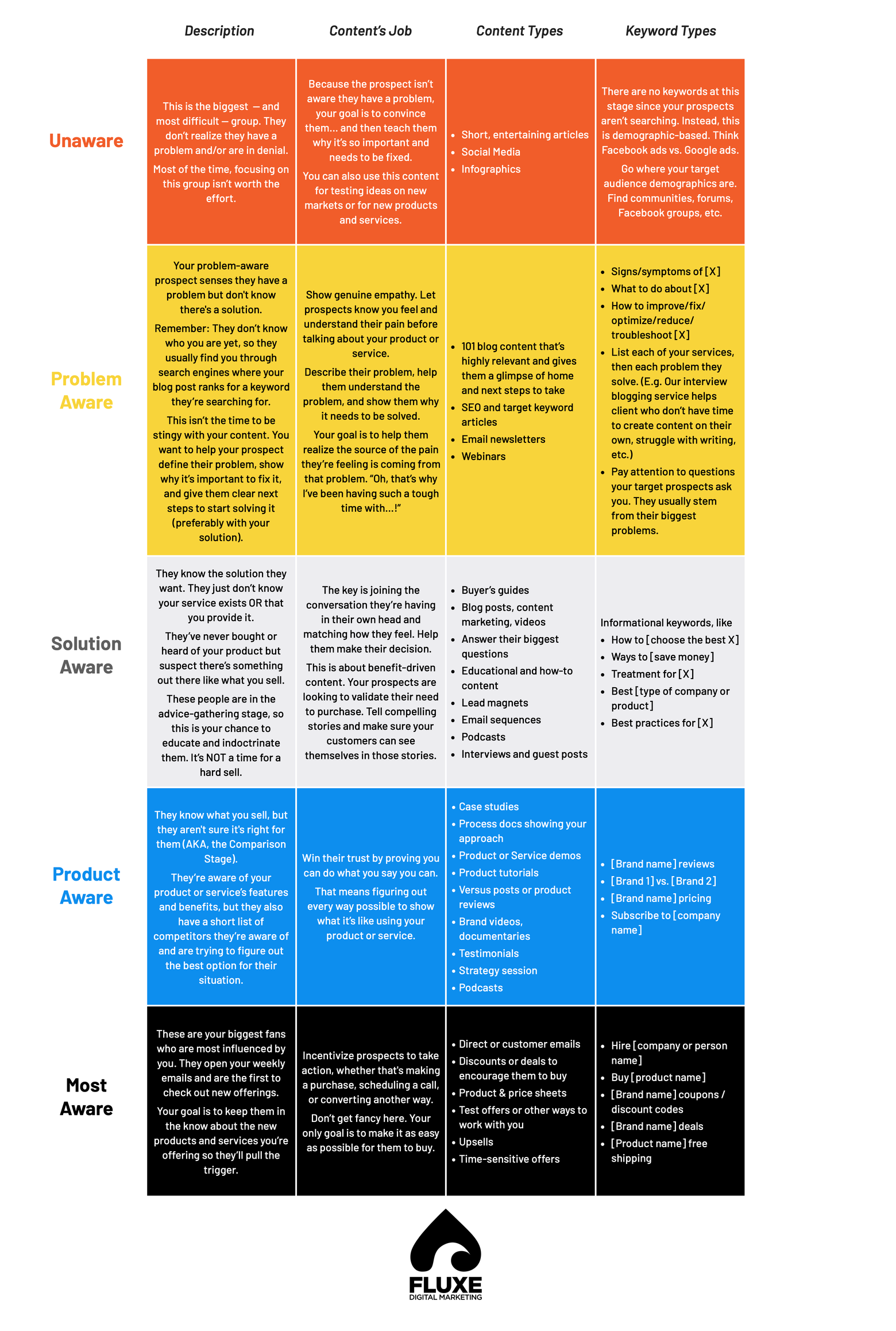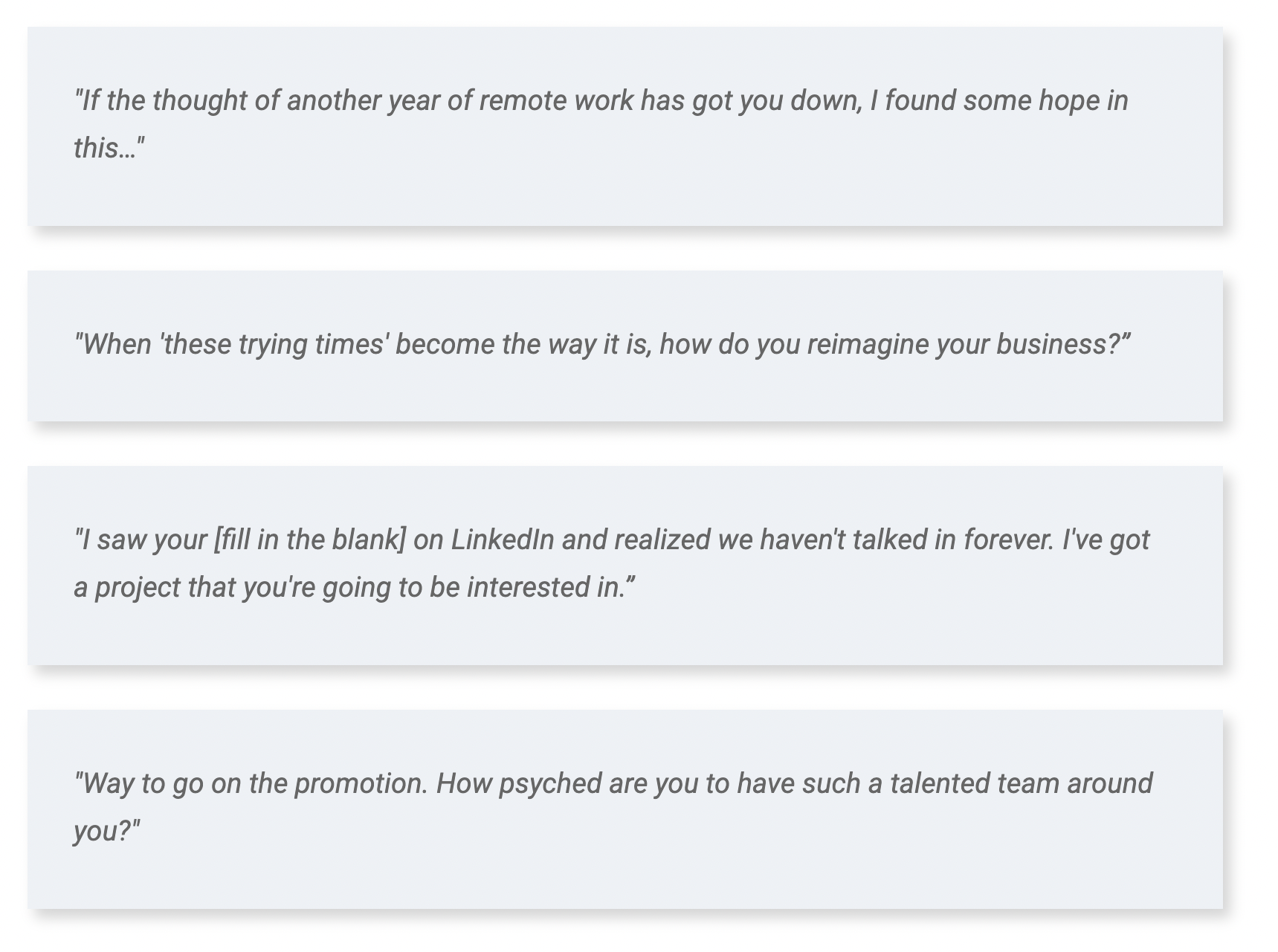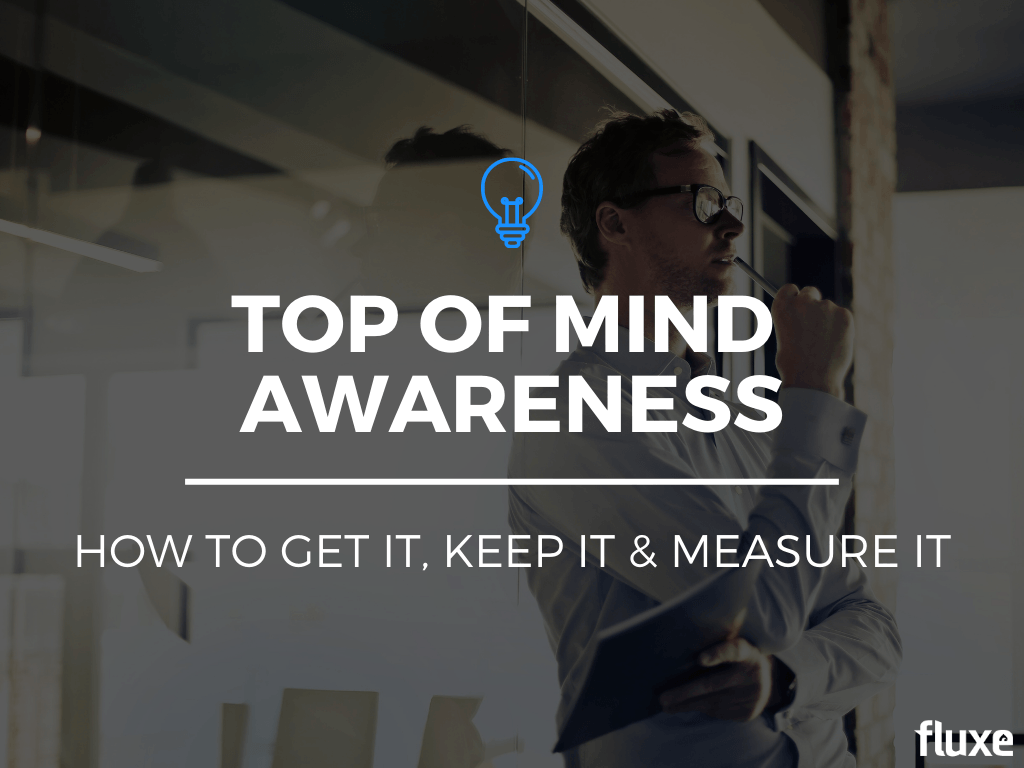I’ve gotten some of my best clients from leads I thought had gone stone cold.
I may bump into them (when we used to bump into people) or randomly check in with them months after our conversation came to a halt.
Most often, they will say, “Where have you been? We were about to start a new project, and I was thinking you’d be perfect for this.”
My response is usually, “Well, why didn’t you reach out?”
“You know, I don’t know. But I’m so glad you got in touch.”
Are you the first business people think of when trying to solve a problem or embark on a new direction? Would you like to be?
It’s called top of mind awareness, and it’s kind of like fly-fishing. Here’s what I mean…
What Is Top of Mind Awareness?
So, what is top of mind awareness? I was recently in Montana visiting a buddy of mine. A guide took us out on the water and taught us about the lures, the timing, and reading the river. It was remarkable how much he saw that I couldn’t, and it was all happening right below the water’s surface.
Not to beat an analogy to death, but identifying prospects is a bit like my fly-fishing trip to Montana. Many of our prospects exist just below the waterline.
How many prospects are just out of sight? How many are never going to surface? How many commit only to get away?
It can be maddening. But with the right tools, you stand a decent chance.
So what are the best ingredients that make top of mind marketing successful? There are three things:
- Consistency
- Emotional connection
- Strong branding
Consistency
Producing consistently helpful and insightful content requires a lot of time and effort. If you’re not careful, your efforts will go to waste; you need a strategy to ensure that your content is useful and valuable.
This means creating useful content that will help your audience grow their businesses while keeping them informed about what’s going on in the industry. You’ll need to stay current on the latest industry trends, advancements, news, and conversations so you’re always seen as an expert.
It also means planning your content distribution, engaging in conversations, and ensuring that you’re visible in the right places so that content reaches the right people at the right point in their journey.
I call it: “Establishing a relationship you don’t even know exists.”
Consistently getting your content out there and acting “as if” you’re already engaged with your prospective audience is a clear path to connecting with the right people and making them want to engage with you. It’s a subtle but powerful approach that shows people you know what they want before they even know it themselves.
Don’t get me wrong. Consistency can quickly morph into “banner blindness,” wherein you essentially train your prospects to ignore you. You consistently go to the same fishing spot, use the wrong lure, and ignore the changes in the environment.
You can negatively reinforce a stagnant relationship by offering them clickbait content that wastes their time and proves that what you’re offering is unhelpful and unimaginative.
In these cases you’re telling the reader, “Yup, we’re always gonna be here, where we were yesterday, and where we’ll be tomorrow, doing nothing new.” That’s the kind of consistency you need to avoid altogether.
However, if you stay consistent with offering great content, you deliver a valuable contribution. This works significantly in your favor because people will begin to associate you with solutions — and once you make that connection, top of mind awareness grows.
BUT this requires intentional and strategic content marketing.
It would help if you had a plan you can change, test, tweak, and improve. Here’s a guide many of my clients have found invaluable in that pursuit:
The Only Guide You Need to Create Your B2B Content Marketing Strategy
Here’s a pair of startling statistics:92% of marketers view content as an asset, but only 46% have a documented content strategy (according to Content Marketing Institute).What!? If nearly everyone recognizes the importance of content, why have so few people invested in strategies to build, promote, and measure it?My guess is that most marketers skip the hard stuff. READ MORE
Part of that plan should understand every prospect’s stages of awareness.
For example, your best prospects are in the “problem aware,” “solution aware,” and “product aware” phases. They know there’s a problem but they’re not sure of the solution and/or they don’t realize you can solve it.

Tips and Takeaways
- A consistent publishing schedule is essential for SEO rankings. For whatever reason, a regular cadence of content has proven to make Google happier than an irregular publishing schedule. Use this fact as extra motivation to maintain a consistent output of blog content.
- Plan content ahead with a content calendar. The best thing you can do to maintain consistent content output though is to plan ahead. The content calendar won’t fill in itself so, yes, some effort is required up front, but trust me, it pays off. Try planning 12 months and see just how much easier it is to never miss a blog post when you’re not scrambling around for topics each time the publishing date comes around.
- Be everywhere. Since you’re creating content for marketing, you need to promote and distribute it anyway. By sharing your message on social media, paid ads (Facebook and/or Google), and any other distribution platforms you use, it’s easier to stay top of mind. Naturally, ad retargeting shines when it comes to maintaining top of mind awareness.
Emotional Connections
How do you provide content for people in each stage of awareness and make a problem-solving connection?
Be intentional.
For example, when it comes to social media marketing, don’t discount a well-timed, concise thought that could lead prospects down into the rest of your content. People have short attention spans, so use that to your advantage when consistently retargeting content.

Connecting one-on-one, sending something personal and helpful will keep your consistent messaging truthful and intimate.
Those messages rely on timing, but there are always opportunities for retargeting and pixeling prospects in each different stage of awareness. You can pay to share the right piece of content, in the right place, at the right time, for the right person in the right stage.
Either way, excellent content marketing gives your potential client so much value that they are already halfway sold before reaching out to you.
One of my clients told me the other day, “We’re now seeing compounding results with the mix of SEO and content marketing you’re doing. It’s like I went from begging for the sale to taking an order when the content does the selling. New prospects are self-qualified. They found me. They did all the research. They’re already a fan, and many times they ask me for the sale before I can ask them.”
It’s really about building relationships of trust that you don’t even realize are being formed. So when a prospect gets above the line of sight and breaks through the surface of the water — so to speak — it’s relatively easy to reel them in because they want what you have.
They don’t need to be sold. You are both simply benefitting from the emotional connection you have nurtured.
Tips and Takeaways
- Identify the emotional levers at play in your industry. There’s a good chance you already know what these are. But if you’re reading this and working on your business’s top of mind awareness, it may be worth revisiting them and taking some notes. HubSpot’s article on this is great.
- Create some kind of follow-up system for prospect communications. Use empathetic language that connects with the pain points that your product or service addresses and communicate that you care. It can be worth revisiting your buyer persona here and tweaking it if necessary. Communications can be via email, social media, your CRM, or whatever channels you use.
- As discussed in this section, well-timed and thoughtful messages work great. Few people use this tactic and, if done with genuine care and carefully selected prospects, this type of manual outreach is worth the time and attention it needs to be done right.
Strong Branding
Huge global brands conduct focus groups and hire people whose entire jobs are dedicated to maximizing the brand’s top of mind awareness. But the majority of people operate businesses that aren’t positioned to determine the success or failure of their top of mind awareness to a granular point.
Since you probably don’t have a six-figure branding department, advertisements all over television, billboards and the vastness of the internet, adopt a different tactic.
Instead, play a brand-building game. I look at it in terms of outputs and outcomes.
Outputs — Consistent content that’s true to your brand’s message, content promotion where your audience is found, and all messaging created with a pre-determined brand style guide.
Outcomes — Metrics to measure top of mind awareness such as share of search, monthly search volume of your brand name, link clicks from organic, email and social traffic, etc.
Look at it as an experiment.
- First, ask yourself: Am I the first person they think of when they think of x?
- If I’m not: Who is the first person they think of when they think of x?
- What are they doing?
- What are they not doing?
- What can I do differently?
Assess your outputs and the outcomes you measure, and then see how you can improve your marketing to do a better job at building your brand.
Next, develop a plan to improve your outputs and outcomes. Here’s what we use for ourselves and our clients. It’s called The Experiment Planner.
- What’s your hypothesis?
- What do you hope will happen?
- What does success look like?
- How will you know if you need to abandon or fix the approach?
- What are the roles?
- What is your drop-dead date?
- What do you want to track?
- What do you do if it works?
Top of mind awareness isn’t a success or failure thing. It’s an exploration. It’s a test, then optimize thing.
Test. Get feedback. Optimize. Improve. Rinse and repeat.
The experiment is only a failure if you quit too soon.
Tips and Takeaways
- If you’ve realized the importance of top of mind awareness for your current stage of growth, consider updating your branding if it’s due for a refresh. Logo design isn’t easy and choosing brand colors can be painstaking. But since your top of mind awareness matters, the job will be a whole lot easier if your branding is on-point.
- Improve your brand style guide. While this does include brand colors, it also includes the language, tone, and voice used in all of your content. You can follow every tip in this entire post but, if your voice alienates your audience, it will be an uphill struggle all the way.
- Consider a new tagline if you’re not happy with your current one. It’s easy to overlook the importance of the humble tagline. But anyone who’s read Chan Kim and Renee Mauborgne’s Blue Ocean Strategy will know that it’s not to be underestimated.
Look, everybody wants to be the winner of the popularity contest. But you’re not going to win if you don’t know who you are.
Top of mind awareness is built on a solid, slow, and steady foundation of knowing who you are, what problems you solve, and who could benefit most from that kind of expertise.



